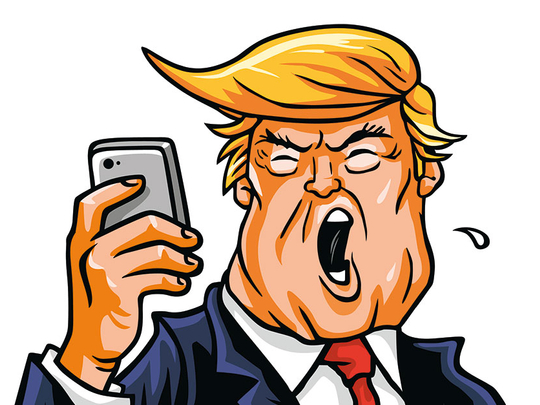
Remember when President Donald Trump would call out a company by name, causing its stock price to gyrate madly, whacking a few billions off its market value with just one offhand tweet? Good times.
Investors eventually realised that when Trump attacked companies it was empty sabre-rattling, safely ignored. However, that wasn’t conventional wisdom a year earlier. Back then, there were threats of trade wars, border taxes and penalties for companies that outsourced jobs. None of that came to pass.
Back then, however, this wasn’t understood. To tease out what was happening then, I put together two indexes: one was filled with companies that Trump liked — we called it the Oligarch Index. An even greater endorsement: the new administration was recruiting current or former senior executives from the favoured businesses to become cabinet members or senior advisers.
Our other group was made up of those companies that Trump trashed, disparaged or threatened. We called this group the Drain the Swamp Index.
Looking back on this one year later is revealing. From the November 2016 election until when we looked at it January 2017, the Oligarch Index was thoroughly trouncing the Drain the Swamp Index, 15.8 per cent to 3.5 per cent. Trump hadn’t even been sworn in, yet he was already making his heft felt in the marketplace.
Things change.
When we look at the companies Trump threatened, we discover this surprising fact: Having the US president get angry with you, call you out publicly and make scary sounding threats at you — well, it turns out to be not so bad. In fact, the results are really good.
And the companies he embraced? Well, not so much.
Consider the performance of those two indexes since I set them up and first wrote about them a year ago today. The Oligarch Index has gained 19.5 per cent since then. That’s respectable, but it lags behind the Standard & Poor’s 500 Index gain of 21 per cent. Sad!
And the Drain the Swamp Index? It utterly crushed both the broader benchmark and the Oligarch Index, gaining 42.5 per cent.
The world’s most powerful man seems to have lost his market-moving mojo. This is even clearer when we look at the results of individual companies in each index.
Consider Trump’s threats against Amazon.com Inc. founder Jeff Bezos; he happens to own Trump’s least favourite newspaper, the “Washington Post”. Since Trump has been railing at Bezos (and at Amazon, and at the Post), the newspaper has had its second consecutive profitable year, hit record subscription numbers, expanded its base, won a Pulitzer Prize and more than doubled its digital footprint.
Amazon’s stock, meanwhile, has been on a tear and is up 57 per cent. Oh, and Bezos is now the world’s wealthiest person, with a fortune worth many, many times that of Trump.
Not too shabby for being on the wrong side of the world’s most powerful man.
But it isn’t just Amazon, which is a behemoth unto itself. Almost all of the companies I put into the Swamp Index have not merely survived Trump’s ire, but thrived.
Trump criticised Boeing Co., which has the contract for building new 747 Air Force One jets, by saying, “costs are out of control, more than $4 billion. Cancel order!”
The stock has doubled since then, rising from $159 to $318. I wonder if more corporate executives are not secretly wishing to themselves “Please, Mr. President — more tweets!”
As for the “failing New York Times”, which Trump constantly trashes? Its stock has appreciated 41 per cent, as its digital business has skyrocketed amid record subscriber growth.
Other than underperforming, the companies in the Oligarch Index haven’t done much to distinguish themselves. For example, Goldman Sachs Group Inc., whose president, Gary Cohn, became Trump’s National Economic Council chairman, is up just 5 per cent in the past year. Another, Colony Northstar Inc. (formerly Colony Capital Inc.) whose chairman, Thomas Barrick, is a longtime Trump friend and backer, is down 31 per cent.
Trump has since moved on from threatening companies to threatening North Korea. There may be a lesson in this for those fearful of those geopolitical tweets. As we have all learnt, they are at best empty threats of a bored, television-obsessed man.
What does the 42 per cent gain of the Drain the Swamp index mean for investors (other than they should hang on my every word, even when I am being sarcastic)? It is yet another example of why the traditional narrative about politics and investing is so misleading.
Data is a much better method for evaluating markets than political narratives. Whether it is the Trump bump or “unprecedented” performance of the market under this president or that, the relationship between politics and markets is at best tenuous. Those people who invest based on this are destined to be disappointed.












